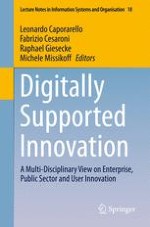This book provides a broad overview of Information and Communication Technology (ICT)-supported innovation both on an evidence-based level, a theoretical and a methodological level. It presents multi-disciplinary perspectives on organizational innovation in enterprises and the public sector, and on the ubiquitous social media-based user innovations. The book especially highlights innovation in knowledge work and human-computer interaction, innovation of and in socio-technical systems, and user-based innovation in public services. It draws upon evidence from various areas of application, including innovative mobility and the factories of the future. The studies presented here will be helpful both for innovation scholars and practitioners in industry – as well as innovators at large – in their current and future studies and undertakings.
